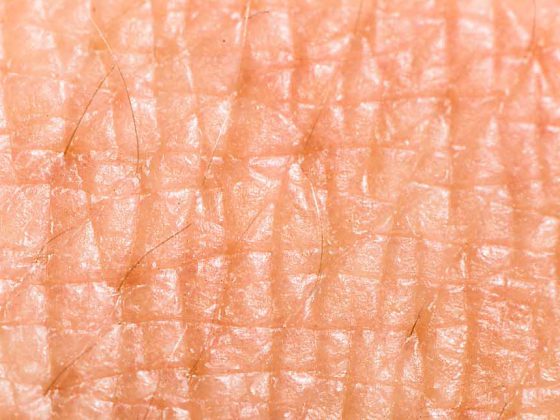Recently, PD Alexander Navarini, MD, Zurich, Switzerland, and other researchers discovered a new cell population involved in the pathophysiology of psoriasis. The dermatologist also investigated in clinical trials how well external therapy benefits patients who have been successfully treated with biologicals. For DERMATOLOGIE PRAXIS, the psoriasis researcher explains what new drugs will be available in the coming years and why he expects more from some than others.
Dr. Navarini, why can’t we cure psoriasis yet?
PD Dr. Navarini: Because it is a complex disease in which three groups of causes play a role: first, genetic predisposition, second, disturbed immune signals, third, environmental factors. We cannot change our genes or completely eliminate environmental factors. We can only try to correct the disrupted gene or immune signals with drugs.
Do you know by now where to intervene?
We know of more than 40 genes that can be altered in psoriasis. But we don’t yet know exactly what the consequences of the changes will be. On the one hand, structural proteins are involved, on the other hand, messenger substances such as interleukin 17 and 23, and on the other hand, proteins of the innate immune system, which have antiviral and antibacterial effects. Hopefully, in the coming years, there will be more personalized medicines, i.e. preparations that are individually selected according to genetic modification.
The new biologicals certolizumab and golimumab are both TNF-alpha inhibitors and are currently being tested in phase II trials. What do you think about it?
This will not be a groundbreaking upheaval in therapy because they have the same mechanism of action as the conventional TNF blockers. But they can be a good alternative if these no longer work because of antibody formation. Some patients might find it interesting because you have to inject certolizumab and golimumab less often.
What new drugs do you expect to see more of?
The antibody briakinumab, which blocks the interleukins IL-12 and IL-23 similarly to ustekinumab, initially sounded exciting. In studies, more than 80% achieved PASI 75, but because some unclear cardiovascular events occurred, this direction was not pursued. However, inhibiting IL-23 alone could be another possibility; at least one antibody is being tested here. I also think it is promising to intervene in interleukin 17.
Why?
Because these drugs are pathophysiologically useful. Indeed, we know that activated Th17 cells secrete IL-17A and IL-17F. These cytokines cause keratinocytes to be activated for messenger production and more psoriatic plaques to develop. Now, researchers are trying to interfere with the signaling pathways of Th17 cells in different ways. Inhibiting these pathways can suppress inflammation more specifically than TNF inhibitors. Secukinumab inhibits IL-17A; in phase II studies, more than 80% of patients achieved a PASI 75. They will likely be approved as second-line therapy only when TNF inhibitors no longer work or are not tolerated. Later, hopefully, they will also be approved as first-line therapy. This was also the case with ustekinumab. It is always interesting to see that our insight into immunological mechanisms is limited. Thus, inhibition of interleukin 22 would have been expected to have a strong effect on psoriasis – but this was not the case in the example of fezakinumab, which inhibits IL-22.
The drugs are supposed to be more specific – but what about adverse effects?
The short-term study results show few adverse effects. However, the more important long-term data are still missing, of course, and typically we wait until we evaluate the benefit of a new therapy and recommend it to our patients, if any.
The new small molecules are also designed to modulate intracellular signaling pathways. What role will they have in the future?
Some I see more as alternatives to methotrexate, fumaric acid, or ciclosporin. This is because they are not as potent as biologicals. For example, with the new calcineurin inhibitor voclosporin, only a maximum of 47% of patients achieved PASI 75. Other signaling pathways involved in psoriasis involve Janus kinase (JAK), Transducers and Activators of Transcription (STAT), Protein Kinase C, and Mitogen-Activated Protein Kinase (MAPK). Various small molecules that interfere here are currently being tested in clinical trials. These include the JAK inhibitor tofacitinib or inhibitors of MAPK or PKC or phosphodiesterase, sphingosine 1-phosphate receptor agonists, and others. Where the drugs will eventually have their place in psoriasis therapy remains to be seen.
Will we eventually be able to cure psoriasis?
I do not see a complete cure on the horizon with today’s medical technology. But we will be able to suppress them more than 90% of the time, so patients will have a near normal quality of life.
Interview: Felicitas Witte, MD











